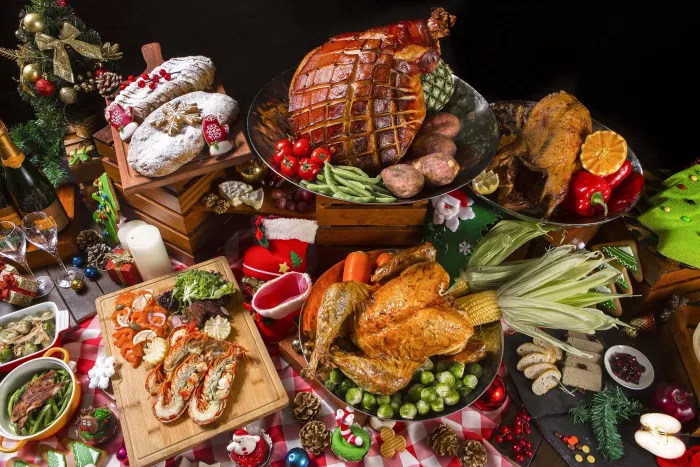Food pairing is an art that goes beyond the simple act of putting complementary flavors together. While culinary creativity has led to some remarkable combinations, there are certain food pairing taboos that may surprise even the most seasoned food enthusiasts. In this article, we will explore 10 food pairing taboos you probably didn’t know about, shedding light on the delicate balance and sometimes unexpected clashes that can occur when combining different ingredients.
Food Pairing Taboos You Probably Didn’t Know About
1. The Sweet and Savory Struggle: Desserts with Garlic or Onions
Food Pairing Taboos often revolve around the clash between sweet and savory flavors, but one unsuspecting combination is desserts featuring garlic or onions. While these pungent ingredients are staples in savory dishes, introducing them to desserts can be a bold move that doesn’t always pay off. Garlic-infused ice cream or onion-flavored pastries may challenge even the most adventurous taste buds, highlighting the importance of understanding the subtleties of each ingredient before venturing into uncharted culinary territory.
2. Seafood and Dairy: A Delicate Dance or a Recipe for Disaster?
The ocean’s bounty and dairy products each bring unique flavors to the table, but combining the two can be a tricky endeavor. Many culinary traditions discourage pairing seafood with dairy due to the clash between the briny essence of the sea and the richness of dairy. Despite this, some dishes, such as the classic Italian pasta alle vongole with Parmesan, manage to strike a delicate balance. Food Pairing Taboos here don’t dictate a complete avoidance but rather caution chefs to tread carefully, ensuring that the chosen dairy elements complement rather than overpower the seafood’s natural taste.
3. Artichokes and Wine: A Thistle-ly Affair
Artichokes, while celebrated for their unique flavor and versatility, pose a challenge when it comes to wine pairing. Food Pairing Taboos arise from the fact that artichokes contain a compound called cynarin, which can interact with the taste buds, making wine taste sweeter than it actually is. This often results in an unpleasant flavor clash, especially with dry wines. To navigate this thistle-ly affair successfully, it’s advisable to opt for wines with higher acidity or explore alternatives like vermouth or certain craft beers that can complement the distinct taste of artichokes without compromising the overall dining experience.
4. Tomatoes and Strawberries: Not a Berry Good Combo
In the realm of fruits, tomatoes often find themselves caught in a debate over whether they are fruits or vegetables. However, what’s unequivocal is that combining tomatoes with strawberries is a Food Pairing Taboo that may leave taste buds bewildered. Despite both being fruits, the stark contrast in their flavor profiles – the acidity of tomatoes versus the sweetness of strawberries – can create a confusing amalgamation that fails to satisfy the palate. This unlikely pairing serves as a reminder that not all fruits are destined to be soulmates on the plate.
5. Eggs and Mint: A Fresh Start or a Flavor Fumble?
Eggs, a breakfast staple enjoyed in various forms, might seem like an adaptable ingredient open to countless pairings. However, one often overlooked Food Pairing Taboo involves the introduction of mint into egg-centric dishes. While mint can add a refreshing element to desserts or beverages, its intrusion into the realm of eggs can lead to a clash of flavors. Mint’s cool and intense aromatic notes can overpower the subtleties of eggs, leaving the eater with a conflicting taste experience. It’s a reminder that not every fresh ingredient complements the inherent richness of eggs.
6. Citrus and Tomatoes: Acidic Antagonists
While individually cherished for their vibrant acidity, combining citrus fruits and tomatoes can be a culinary misstep. The clash of acids in this Food Pairing Taboo can lead to a flavor profile that is overly tangy and may lack depth. Despite both being acidic, the specific nuances of their acidity can create a confusing taste experience, leaving diners wondering which dominant note to focus on. Careful consideration of the type and ripeness of both citrus and tomatoes is essential to strike a balance, allowing each ingredient to shine without overwhelming the palate.
7. Cheese and Fish: Navigating the Waters of Contrasts
Cheese and fish, two culinary delights that are adored independently, often face resistance when paired together. This Food Pairing Taboo stems from the stark differences in their flavors and textures. Fish, with its delicate taste, can be easily overshadowed by the bold and robust nature of many cheeses. However, when approached with finesse, this pairing can be a harmonious convergence of textures and flavors. Opting for milder cheeses and carefully chosen fish varieties can lead to a delightful combination that challenges preconceived notions.
8. Chocolate and Cheese: A Divisive Duo
Individually, chocolate and cheese are beloved indulgences that many savor in various forms. However, bringing these two together can be a contentious affair. The Food Pairing Taboos surrounding chocolate and cheese often revolve around the challenge of finding a balance between their contrasting flavors. While some assert that the richness of both can be overwhelming, others argue that the right pairing, such as a sharp cheddar with dark chocolate, can create a delightful symphony of tastes. It’s a reminder that pushing culinary boundaries can lead to unexpected delights but may not always result in unanimous approval.
9. Red Wine with Spicy Foods: A Fiery Fusion or a Palate Clash?
The allure of a bold red wine paired with spicy dishes is a common practice, but it’s not without its pitfalls. This Food Pairing Taboo arises from the fact that high-alcohol red wines can intensify the heat of spicy foods, potentially overwhelming the palate. While some enthusiasts appreciate the fiery fusion of flavors, others find that the alcohol content exacerbates the heat, making the dining experience uncomfortable. Opting for lower-alcohol reds or exploring alternatives like off-dry whites can provide a more balanced accompaniment to spicy fare.
10. Lettuce and Warm Dressings: A Wilted Affair
Lettuce, a staple in salads, meets its match in the form of warm dressings. This Food Pairing Taboo highlights the challenge of combining the crisp, refreshing nature of lettuce with dressings that are heated. Warm dressings, while enticing in their own right, can lead to a wilted and lackluster salad experience. The temperature clash compromises the integrity of the lettuce, turning it from a crisp component to a limp disappointment. Maintaining the vibrant freshness of lettuce often requires a careful selection of complementary dressings, ensuring a harmony that elevates rather than diminishes the overall salad experience.
In conclusion, while culinary experimentation is encouraged, understanding and respecting Food Pairing Taboos can enhance the dining experience. These taboos serve as guidelines to navigate the intricate world of flavors, ensuring that combinations are not only inventive but also harmonious. Whether it’s the clash of sweet and savory, the challenge of balancing acidity, or the seemingly incompatible union of chocolate and cheese, recognizing these taboos allows chefs and home cooks alike to create culinary masterpieces that tantalize the taste buds while respecting the inherent characteristics of each ingredient.
























